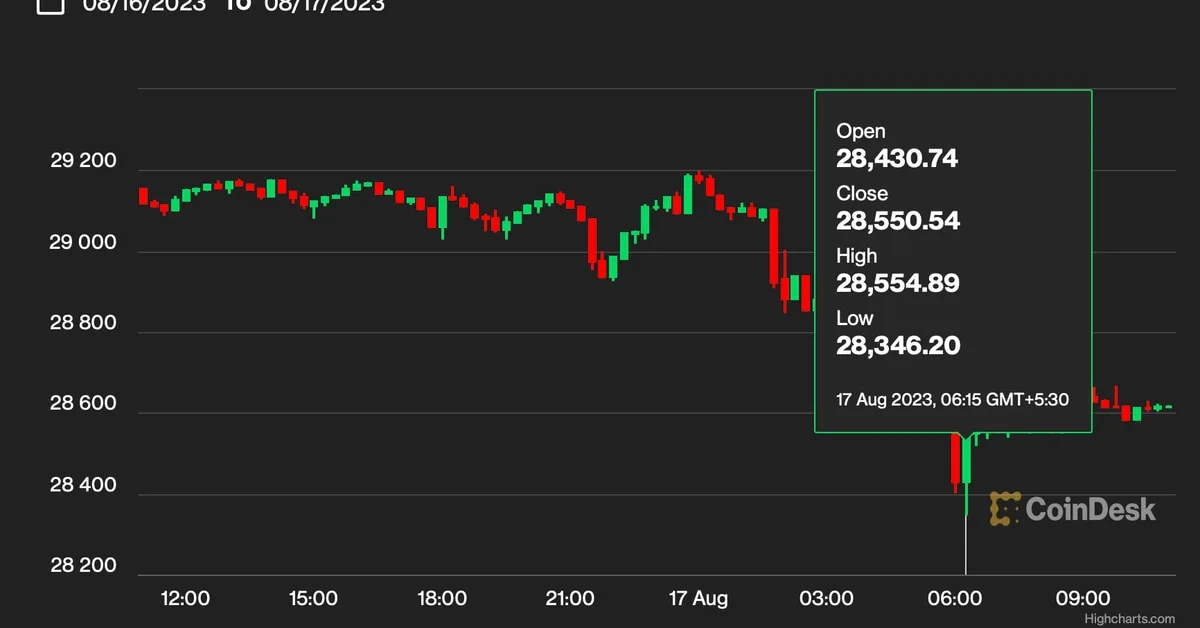Bitcoin (BTC) has slipped to its lowest since June 21, extending Wednesday’s 1.6% slide that mirrored risk aversion on Wall Street. U.S. stocks fell Tuesday on renewed banking sector concerns and China recession fears. According to Lawrence Lewitinn, director of content at crypto analytics firm The Tie’s, Two-thirds of their positions are short (shown in red) versus one-third long (shown in blue). That’s the widest it’s been in since April 2022.
The downside volatility in BTC comes days after the U.S. Commodity and Futures Trading Commission’s (CFTC) report on commitment of traders (COT) showed leveraged funds – hedge funds and commodity trading advisors – ramped up bearish bets in the CME-listed cash-settled bitcoin futures in the week ended Aug. 8. This could be due to potential spillovers from murky macro outlook and rising nominal and inflation-adjusted U.S. government bond yields.
Despite recent positive crypto-specific developments like the launch of a stablecoin by PayPal and a string of applications for futures-based exchange-traded funds (ETFs) tied to ether (ETH), the crypto market has been indifferent. David Lawant, head of research at institutional trading desk FalconX, said in a market update, Overall, while the improving trends and fundamentals in crypto continue to sustain optimism, it’s a good time to keep a close eye on any potential spillover impacts from macro to broader risk assets and, by extension, crypto.
The renewed downside volatility in Bitcoin is consistent with its record of putting interim tops after notable rallies in meme coin SHIB. The self-proclaimed Dogecoin-killer surged over 20% in the first 12 days of the month, predominantly on optimism that a layer 2 Shibarium launch would help the cryptocurrency revamp its image as a serious industry player. Since Aug. 12, the cryptocurrency has pulled back 18%, with prices falling 9% in the past 24 hours alone amid Shibarium’s turbulent start. Funding rates in SHIB perpetual futures trading on Binance have crashed to a two-month low of -0.084%, according to data source Coinglass. This negative figure indicates that shorts are paying longs to keep their bearish positions open.
